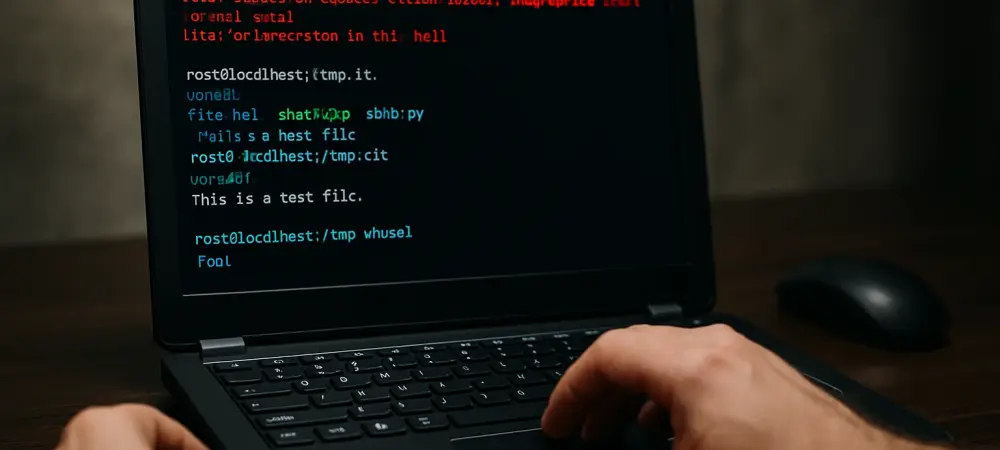In an era where digital infrastructure underpins nearly every aspect of business and personal life, the discovery of a severe vulnerability in a widely used tool like ImageMagick sends shockwaves through the cybersecurity community. This open-source image processing library, integral to countless web services, cloud pipelines, and applications, has recently been found to harbor a critical remote code execution (RCE) flaw, tracked as CVE-2025-57807, with a CVSS score of 9.8, marking it as a near-maximum threat. The urgency to address this issue cannot be overstated, as attackers can exploit this vulnerability to execute arbitrary code on affected systems, potentially leading to full process takeover or catastrophic denial of service. With a proof-of-concept (PoC) exploit already in the public domain, the window for preemptive action is rapidly closing, making immediate updates not just advisable but essential for safeguarding digital environments across industries.
Understanding the Severity of CVE-2025-57807
The technical underpinnings of this vulnerability reveal why it poses such a grave danger to systems relying on ImageMagick. Residing in the MagickCore subsystem, specifically within the blob I/O implementation in MagickCore/blob.c, the flaw stems from a heap out-of-bounds write issue in the SeekBlob() and WriteBlob() functions. A mismatch in how forward seeks and subsequent writes are handled in memory-backed blobs allows attackers to seek beyond the buffer’s end, overwriting memory with controlled data at specific offsets. This precision enables reliable execution of malicious code, transforming a seemingly routine image processing task into a gateway for system compromise. Affecting versions 7.1.2-0 and 7.1.2-1, and potentially others with similar logic, this issue spans LP64 systems across various architectures, amplifying its reach and impact on diverse environments where untrusted image uploads are processed.
Delving deeper into the implications, the ease of exploitability sets this vulnerability apart as a pressing concern for security teams. The release of a PoC exploit by a security researcher demonstrates how memory corruption can be weaponized to achieve process takeover without requiring special configurations or policy bypasses. Given ImageMagick’s pervasive integration into web applications and automated workflows, the risk of remote attackers leveraging untrusted inputs to execute harmful code is alarmingly high. Organizations that fail to isolate external image processing are particularly vulnerable, as a single malicious upload could serve as the entry point for broader network infiltration. The critical CVSS score of 9.8 underscores the potential for widespread damage, urging immediate attention to patching and mitigation strategies to prevent exploitation in real-world scenarios.
The Urgent Need for Patching and Mitigation
Addressing this critical flaw requires swift and decisive action, as the ImageMagick project has already released patches to neutralize the threat. Updates in versions 7.1.2-3 for the 7.x branch and 6.9.13-29 for the 6.x branch incorporate fixes that ensure buffer expansion occurs before writes, effectively preventing out-of-bounds errors. Security researchers and the development team alike stress that updating to these versions is non-negotiable for any system running affected builds. Beyond mere installation of patches, organizations must audit their deployments to identify legacy or unpatched instances of ImageMagick that might linger in less visible corners of their infrastructure. The public availability of a working PoC exploit heightens the stakes, as it equips potential attackers with a ready-made tool to target unpatched systems, leaving little room for delay in implementing these critical updates.
Beyond patching, bolstering defenses through proactive measures is equally vital to mitigate risks associated with this RCE vulnerability. Hardening downstream processes to detect and flag suspicious file operations can serve as an additional layer of protection against exploitation attempts. Security teams are encouraged to scrutinize environments where ImageMagick processes external inputs, ensuring strict isolation mechanisms are in place to limit the blast radius of a potential breach. Continuous monitoring for unusual activity tied to image processing workflows can help in early detection of attack attempts, especially given the heightened alertness among cybersecurity professionals worldwide. As the digital landscape evolves, adopting a multifaceted approach that combines timely updates with robust security practices remains the most effective strategy to shield systems from the devastating consequences of such high-severity flaws.
Moving Forward with Enhanced Security Measures
Reflecting on the response to CVE-2025-57807, it became evident that the rapid deployment of patches in versions 7.1.2-3 and 6.9.13-29 marked a pivotal step in curbing the immediate threat. Security teams across the globe scrambled to apply these updates, recognizing the imminent danger posed by the public PoC exploit that laid bare the vulnerability’s potential for havoc. Organizations that prioritized auditing their systems for outdated builds gained a crucial edge in preventing exploitation, while those that lagged behind faced heightened risks of compromise. The incident served as a stark reminder of the relentless pace at which cyber threats emerge and evolve, demanding constant vigilance.
Looking ahead, the focus must shift to sustainable strategies that prevent similar crises from escalating. Implementing automated update mechanisms can ensure that systems remain protected against newly discovered flaws without manual intervention. Additionally, fostering a culture of security awareness within organizations will empower teams to anticipate and respond to vulnerabilities with agility. As the landscape of cyber threats continues to shift, investing in advanced threat detection tools and regular security assessments will be critical to staying ahead of attackers seeking to exploit tools as ubiquitous as ImageMagick.

